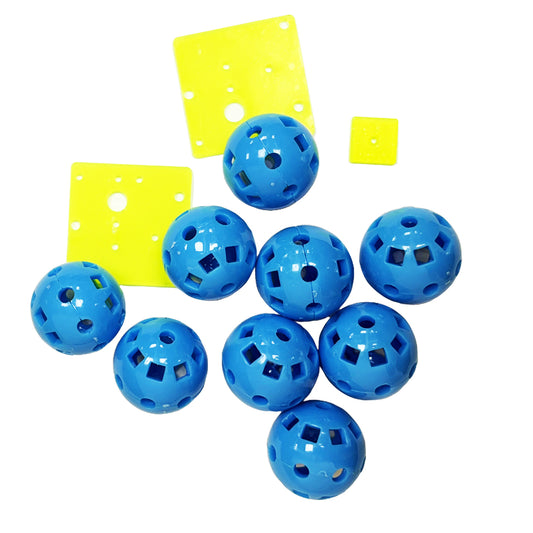
What Is STEAM Education and Why It Matters for Today’s Students
IEM RoboticsTable of Content
- What Is STEAM Education?
- The Significance of the Arts in STEAM
- Key Components of steam education
- Benefits of STEAM Education
- What is STEAM in school?
- Understanding the Difference between stem vs steam education
- Global Adoption of STEAM Education
- Challenges in Implementing STEAM Education
- Conclusion
Understanding what is STEAM education is essential for modern learning. STEAM, which stands for Science, Technology, Engineering, Arts, and Mathematics, is an innovative educational approach that goes beyond traditional STEM programs. While STEM focuses on analytical thinking, logical problem-solving, and technical skills, the addition of the Arts transforms learning into a more holistic experience. The STEAM education meaning lies in its ability to blend creativity with critical thinking, encouraging students to explore ideas, design solutions, and approach challenges imaginatively.
What Is STEAM Education?
Steam stands for Science, Technology, Engineering, Arts, and Mathematics. It is an educational philosophy that emerges from the belief in the connectedness of these disciplines. By embedding the arts into STEM disciplines, STEAM education is designed to increase creativity, critical thinking, and problem-solving among students. This inclusive approach to learning allows students to consider challenges in the world today from multiple on Ctrl+X modes, improving understanding and possibly generating innovative ideas.
The Significance of the Arts in STEAM
The Arts are included in STEAM education to help combine analytical and creative thinking. While logic and structure are emphasized in STEM disciplines, thinking creatively, expressing opinions, and designing are emphasized in the Arts. When these two areas meet, learners can think comprehensively about problems in a precise analytical way, while also thinking imaginatively. This leads to more holistic or complete problem-solving. For example, when designing a new product, knowledge of user experience and aesthetics (the Arts) can enhance the functionality and enjoyment of the outcome.
The importance of the Arts in STEAM education lies in transitioning from an overly analytical experience to a very creative and holistic one. The combination of these disciplines enables students to engage in opportunities to think critically and imaginatively. This is vitally important because, in real-world problems, innovative thinking based on technical or specific knowledge rarely meets the complexities of human-centered design, use experience, and aesthetics.
1. Bridging Analytical and Creative Thinking
Steam education meaning subjects teach logic, structure, and systematic problem-solving. The Arts, however, nurture creativity, imagination, and innovation. When combined, students learn to approach problems from multiple angles, balancing analytical precision with creative insight.
2. Encouraging Innovation
Creativity fostered through art, design, music, or theater helps students generate novel ideas. This innovation is crucial for developing solutions that are not just effective but also original, relevant, and engaging.
3. Enhancing Real-World Problem Solving
Artistic thinking helps students consider human experience, aesthetics, and usability. For example, in product design, understanding color, form, and user interaction—core aspects of the Arts—can dramatically improve a product’s appeal and functionality.
4. Fostering Empathy and Emotional Intelligence
The Arts help students recognize and express emotions, cultural perspectives, and human needs. This awareness enables learners to design solutions that are user-friendly, inclusive, and socially meaningful.
5. Supporting Communication and Collaboration
Through artistic activities, students develop skills in visual storytelling, presentations, and creative expression. These skills enhance teamwork, as learners can articulate complex ideas more clearly, bridging technical concepts with accessible explanations.
Key Components of steam education
● Science: In STEAM education entails the systematic study of the natural world through observation and experimentation. It serves as the foundation for inquiry-based learning, encouraging students to ask questions, conduct experiments, and analyze data.
● Technology: Technology encompasses the tools and machines that may be used to solve real-world problems. In STEAM education, it not only includes the use of technology but also promotes understanding the design of the technology and its impact on society.
● Engineering: Engineering is the application of scientific principles designed to build systems, structures, and devices. STEAM education emphasizes the engineering design process which includes identifying and defining problems, brainstorming solutions, prototyping and testing to solve them.
● Arts: The Arts in STEAM education refer to visual arts, music, theater, dance, and design. The Arts promote creativity and innovation and allows students use different tools to explore ideas and think outside the box to solve problems.
● Mathematics: In STEAM education, Mathematics refers to the study of numbers, shapes, patterns and relationships. Mathematics provides the quantitative basis for analysis and problem-solving in all other STEAM disciplines.
Benefits of STEAM Education
1. Enhanced Creativity: By integrating the Arts, STEAM education fosters an environment where creativity is valued alongside technical skills. Students learn to think outside the box, leading to innovative solutions and ideas.
2. Improved Problem-Solving Skills: The interdisciplinary nature of STEAM encourages students to approach problems from multiple perspectives. This holistic view enhances their ability to devise effective and efficient solutions.
3. Increased Engagement: STEAM education often involves hands-on projects and real-world applications, making learning more engaging and relevant to students. This increased engagement can lead to a deeper understanding of the material and a greater interest in the subjects.
4. Better Collaboration: Many STEAM projects require teamwork, helping students develop collaboration and communication skills. Working in diverse teams mirrors real-world scenarios, preparing students for future careers.
5. Preparation for Future Careers: The skills developed through STEAM education—such as critical thinking, creativity, and collaboration—are highly valued in the modern workforce. Students are better prepared for careers in various fields, including technology, engineering, design, and the arts.
What is STEAM in school?
STEAM in school is an educational approach that integrates Science, Technology, Engineering, Arts, and Mathematics into the curriculum. Unlike traditional STEM programs, which focus mainly on technical and analytical skills, STEAM adds the Arts to foster creativity, innovation, and design thinking.
In practice, STEAM in school involves:
● Project-Based Learning: Project-based learning (PBL) is an effective method for implementing STEAM education. In PBL, students work on a project over an extended period, which encourages deep learning and the application of knowledge across disciplines.
● Interdisciplinary Curriculum: Creating an interdisciplinary curriculum that connects concepts across subjects allows students to see the relevance and application of their learning in various contexts.
● Collaboration with Industry Professionals: Partnering with professionals from various fields can provide students with real-world insights and experiences, enriching their learning and understanding of how STEAM disciplines intersect in the workforce.
Understanding the Difference between stem vs steam education
Understanding the STEAM in education definition also helps highlight the difference between STEM vs STEAM education, showing how integrating the Arts enriches problem-solving and prepares students for future careers in diverse fields.
While both STEAM and STEM focus on science, technology, engineering, and mathematics, the key difference lies in the inclusion of the Arts in STEAM. This addition emphasizes creativity and design thinking, which are essential for innovation. STEAM education recognizes that the integration of artistic principles can enhance the understanding and application of STEM concepts.
Global Adoption of STEAM Education
STEAM education has gained traction worldwide, with various countries adopting this model to prepare students for the challenges of the 21st century. Educational institutions are increasingly recognizing the value of an interdisciplinary approach that fosters creativity, critical thinking, and problem-solving skills.
Challenges in Implementing STEAM Education
1. Resource Constraints: Implementing STEAM education requires access to diverse resources, including materials for hands-on projects and technology tools. Schools with limited budgets may face challenges in providing these resources.
2. Teacher Training: Educators need professional development to teach in a STEAM environment effectively. This includes training in interdisciplinary teaching methods and the integration of the Arts into STEM subjects.
3. Curriculum Development: Developing a curriculum that seamlessly integrates the Arts with STEM subjects can be complex. It requires careful planning and collaboration among educators from different disciplines.
Conclusion
So now you know what is steam education? STEAM education represents a forward-thinking approach to learning that prepares students for the complexities of the modern world. By integrating science, technology, engineering, arts, and mathematics, STEAM fosters creativity, critical thinking, and collaboration. As educational systems continue to evolve, the adoption of STEAM principles can play a pivotal role in shaping innovative and adaptable learners ready to tackle future challenges.








